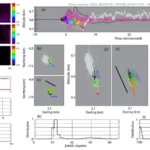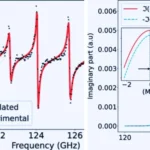Key Points
- Scientists date the Moon’s South Pole-Aitken basin to over 4.32 billion years ago, making it the Moon’s oldest known impact site.
- The SPA basin is located on the Moon’s far side and spans over 2,000 kilometers.
- Researchers used the Northwest Africa 2995 meteorite to determine the age, analyzing uranium and lead in rock fragments.
- The results provide insights into early Earth’s history, as the Moon likely experienced similar impacts during the same period.
Researchers believe they have determined the age of the Moon’s largest and oldest impact basin, dating the South Pole-Aitken (SPA) basin to over 4.32 billion years ago. This new finding sheds light on the Moon’s early history and challenges previous assumptions about when the most intense bombardment of asteroids and comets occurred.
The Moon, like Earth, has been subjected to frequent impacts by space debris, creating craters and basins. However, until now, the precise timing of these impacts, especially regarding the Moon’s oldest basin, has remained unclear. A research team led by scientists from The University of Manchester studied a lunar meteorite called Northwest Africa 2995, which helped them estimate the formation date of the massive SPA basin, located on the far side of the Moon and spanning over 2,000 kilometers.
The research suggests that the SPA basin was formed around 120 million years earlier than what was previously thought to be the most intense period of impact on the Moon. The Late Heavy Bombardment period was believed to have occurred between 4.2 and 3.8 billion years ago. However, this new evidence indicates that the Moon may have experienced a more gradual process of impacts over a longer period.
The findings, published in Nature Astronomy, were achieved by analyzing the uranium and lead content in mineral and rock fragments from the Northwest Africa 2995 meteorite. This meteorite, discovered in Algeria in 2005, is a type of regolith breccia, meaning it contains various rock types that were once part of the lunar surface and were fused by the heat of an impact. The research showed that the materials in the meteorite dated back to between 4.32 and 4.33 billion years ago.
In collaboration with institutions including the Institute of Geology and Geophysics – Chinese Academy of Sciences, the Swedish Museum of Natural History, and the University of Portsmouth, the team compared their findings to NASA’s Lunar Prospector mission data. Data from the mission, which orbited the Moon in the late 1990s, collected on surface composition that confirmed the meteorite’s chemical similarities to rocks in the SPA basin, strengthening the connection between the two.
The researchers believe these results help us understand the Moon’s history and provide insights into early Earth, which likely experienced similar impacts. With Earth’s ancient rock records lost, the Moon is key to unlocking clues about Earth’s early conditions.










